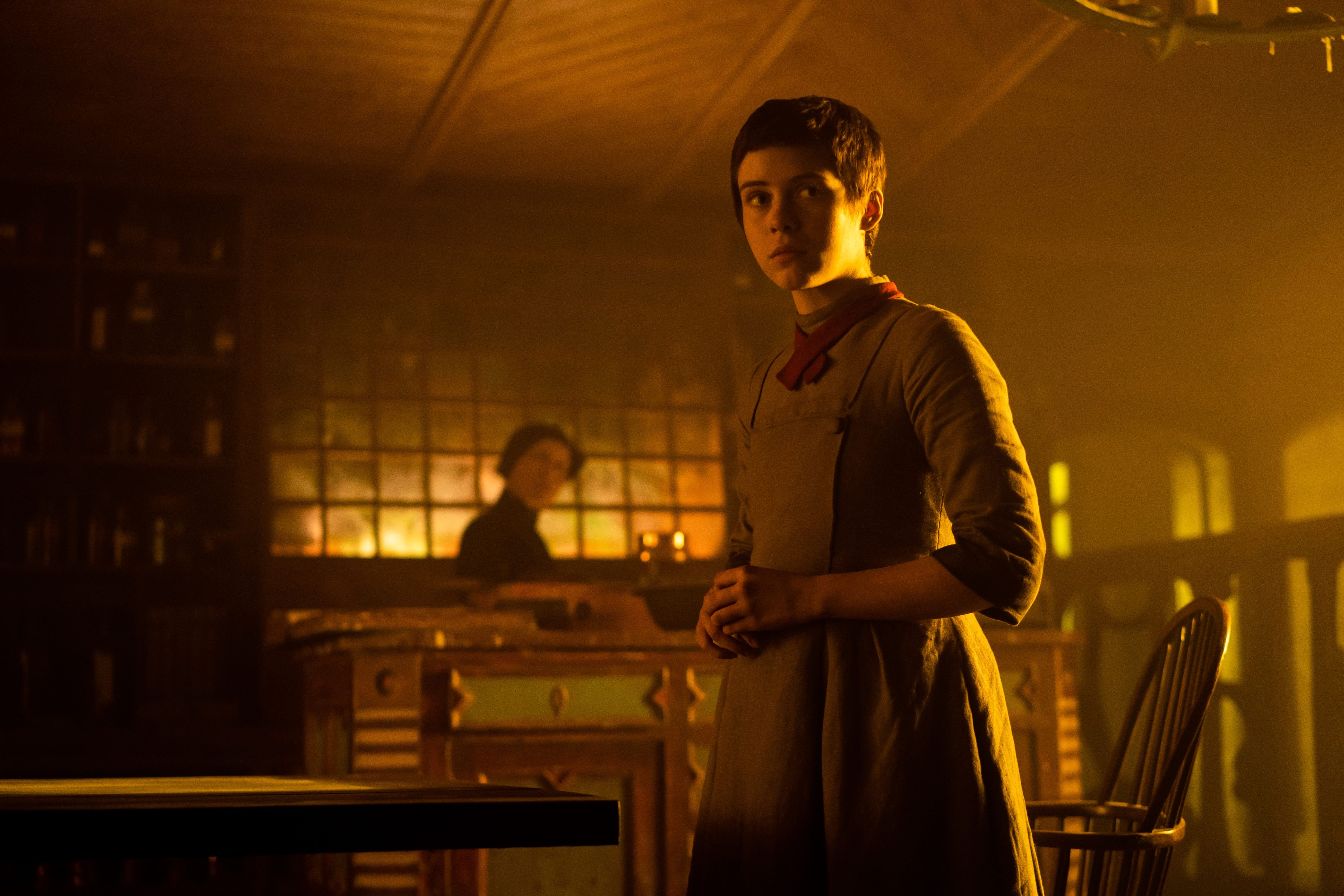
When I first saw the trailer for director Oz Perkins’ take on the iconic “Hansel and Gretel” story, the biggest shocks were that I didn’t see Robert Eggers’s name or A24’s logo ever come on the screen because, damn, it looked incredible. It seemed like we had a true visionary take on a Brothers Grimm classic and it surely had my curiosity to see what it could bring to the table. Now, after seeing Perkins’s Gretel & Hansel, it excels in delivering mesmerizing and haunting visuals, but barely hits its marks in adding new, complex story elements to this classic.
As a whole, the film doesn’t divert too far from what everyone knows: Gretel (Sophia Lillis) and her younger brother Hansel (Samuel Leakey) come across Holda (Alice Krige), a strange old woman who turns out to be a witch with sinister plans for them. However, writer Rob Hayes adds more context and connective elements to Gretel and Holda that bring out a surprisingly feminist narrative.
Left to care for Hansel after they’re forced to leave their childhood home, Gretel is given much more of a character arc than usual and a strange, but interesting relationship with the witch. Through conversations with Holda and a connection to a tale that Gretel knows, there’s actually an interesting arc for her about discovering her power and forging her own path. I deeply appreciated Hayes and Perkins taking liberties with this classic story and Lillis does a stellar job balancing the caring nature Gretel has towards Hansel with her internal struggles as she navigates the nightmarish hell-scape that Holda puts her in.
In his debut performance, Leakey makes a good first impression by making Hansel an innocent and shares solid chemistry with Lillis. Krige, meanwhile, gives off a creepy charm that’s hard to resist and presents a sense of power that makes her a formidable foe. Overall, it’s easy to see the uniqueness in Perkins’s take on a classic—I just wish he didn’t show this through such conventional means.
Gretel & Hansel severely suffers from an overuse of generic narration that never feels as if it’s pushing the narrative forward. Even though it’s easy to see the character development, you never fully feel it because it only reaches the surface level. A lot of the themes on female empowerment feel trapped in a story that doesn’t get the chance to explore them. The discussions of Gretel’s empowerment are restricted to one main conversation with Holdo and a long narration in the final scene. Worse, the words lack unique messaging and there’s nothing visually striking to go with it. The film makes its points so obvious that there’s not much in the moment to make you think about it any deeper. It’s not too much of a shocker considering the film is under 90 minutes, but it’s a shame nevertheless because the film could have a much stronger effect on viewers if it fleshed out its characters and themes. The film is honestly more preoccupied with showing off its incredibly haunting environment—which is, admittedly, pretty amazing.
The cinematography from Galo Olivares and production design from Jeremy Reed come together perfectly and I almost wish the film came out in a time better-suited for awards chances. The film gives off vibes of Eggers’s The Witch right from the very beginning and it might be one of the most visually stunning horror films I’ve ever seen. The visuals are easily one of the strongest elements Gretel & Hansel has to offer and Perkins uses it well to create an atmospheric horror experience.
Instead of using “jump scares” or other cliché elements of the horror genre, Perkins takes a more patient approach and uses the environment to create creepy atmosphere that viewers’ get sucked into. From a hallucinatory experience that the two have with mushrooms to the chill-inducing nightmares that Gretel gets sucked into, there are plenty of creepy sequences done in a way that many mainstream horror movies won’t. It’s the kind of arthouse horror film that’s become increasingly common and will likely make it divisive among most viewers. Due to Perkins not going for “shock value” horror, the film has a very sluggish pace and a too-relaxing tone that could make it a big of drag for viewers. However, the atmospheric horrors that Perkins presents are more than enough to give viewers goosebumps and please horror fans that are looking for something different. The film is especially perfect for those wanting to check out horror without jump scares and works well for younger viewers want to check out what the genre’s about because of its PG-13 rating.
Even for its conventional storytelling, Perkins’s Gretel & Hansel is the kind of arthouse horror adaptation that I’d like to see more often. It nicely updates certain aspects of the classic story for modern audiences and showcases visuals that show Perkins’s vision for bringing a Brothers Grimm classic to life. Perkins recently talked about this film being the start of a Grimm fairy tale universe that I would love to see and has even shown interest in taking his talents to the Friday the 13th franchise. While I’m mixed on him taking on Jason, Gretel & Hansel definitely shows his strengths as a director and, all in all, is definitely worth checking out.

